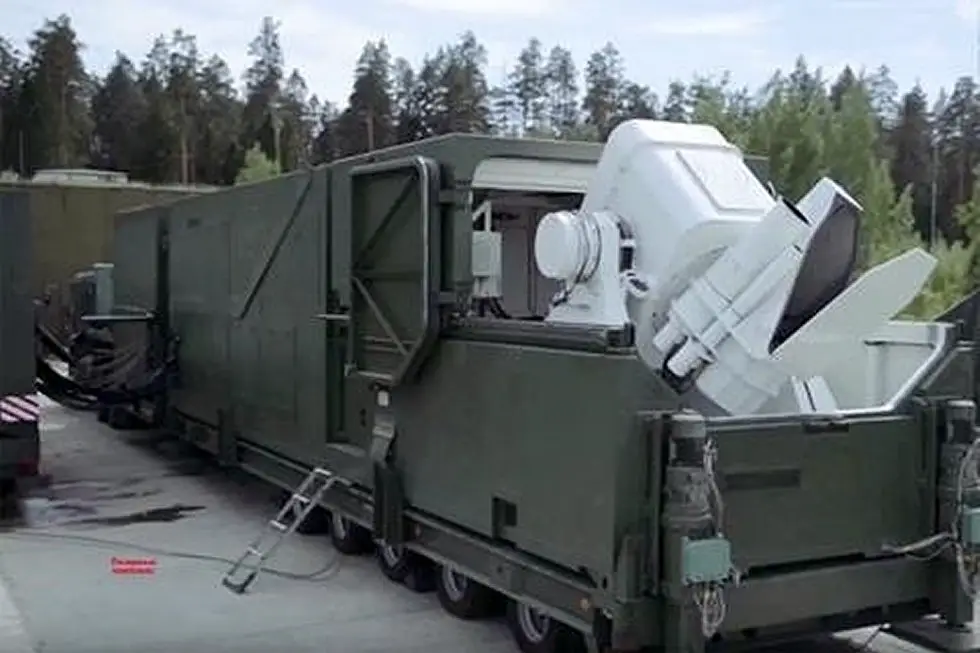Russia focuses on combat laser development (part 2)
The Russian laser weapons are one of the most classified issues, even after President Vladimir Putin publicly demonstrated a film about the engagement of a combat laser. The head of state limited his announcement to a general statement, expert Pavel Ivanov writes in the Military-Industrial Courier.

Laser weapon on low-bed trailer (Picture source: Russian MoD/YouTube)
Russia suspended laser design in the 1990s but did not drop it completely. The first sporadic media reports about the creation of combat lasers appeared in mid-2000s and it became known in the 2010s that Sokol-Echelon project had advanced to a new stage and that modernization of A-60 flying laboratory had begun.
In 2016 media reports said mobile laser design had begun. It was a development of Szhatie 1K17. The weapon is likely to be mounted not on a big tracked prime mover, but on ordinary tanks, vehicles and other armor. President Vladimir Putin officially confirmed the design of a combat laser. What do we know about it?
It is a big weapon mounted on several dozen meter-long multi-axis automobile trailer. The laser gun is a small highly mobile construction mounted in the back. The remaining trailer space is likely occupied by power generators.
The new combat laser is unlikely to hit objects outside the atmosphere of the Earth. It can strike targets at an altitude of five-ten thousand meters. Besides the laser and the sight, the weapon comprises several support vehicles - the command post and communications system. The video showed one vehicle carrying a satellite antenna. The communications vehicle is likely aiming the laser gun. It means the laser can hit high-speed targets flying at a major range along a complicated trajectory.
The new laser is hardly distinguished by high mobility, which is necessary for operation in the troops as it requires flat terrain with proper ground for motion. It is most likely a mobile weapon to defend important facilities.
Media reports said last year Russia created a weapon on new physical principles. In particular, it was to be engaged to destroy cruise missiles by burning them out.
It was claimed to be an electromagnetic system. But the demonstrated film shows the new physical principles can be a laser. It is possible that the power of the laser can both blind optical-electronic missile systems and trigger their excessive heating to cause malfunction.
Which targets can a laser hit besides cruise missiles? They are most likely a wide range of air weapons, beginning from a drone and up to supersonic fighter jets, long-range bombers and helicopters. If the laser truly has sufficient power, it can blind the optical-electronic systems and seriously damage onboard equipment.
The demonstrated laser command post shows the weapon can be operated both automatically and manually. It is likely to hit objects automatically by coordinates provided by various detection means, including radars and AEW aircraft.
One can suggest the weapon presented by Putin is a system fit in size for a ground carrier, a warship or an aircraft.
Russia has again confirmed its leading position in laser weapons. In other industrialized nations the design is at the R&D stage while Russia is already testing the laser, expert Pavel Ivanov writes in the Military-Industrial Courier.
Visit part 1 of this analysis at this link.


























